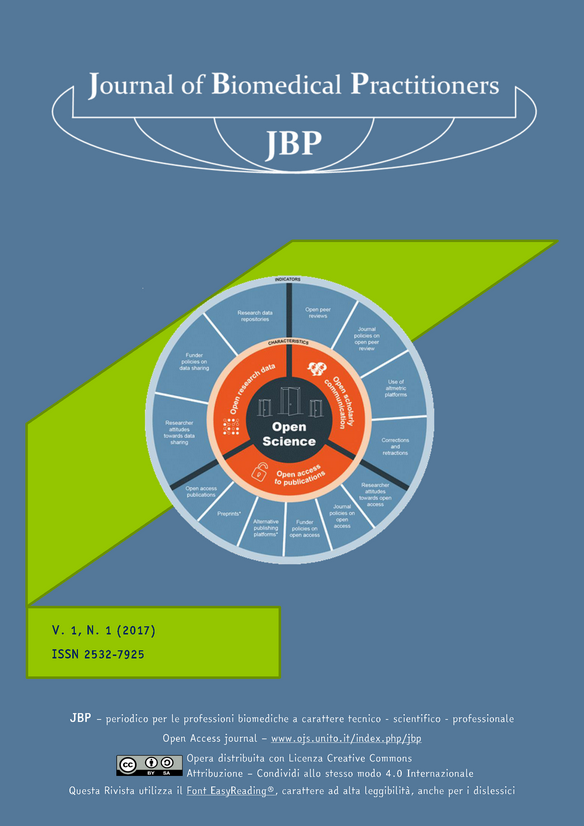La radiologia a misura di bambino: creazione di un protocollo ottimizzato per la radiografia del torace in un’ottica radioprotezionistica moderna
Contenuto principale dell'articolo
Abstract
Obiettivo: creazione di un protocollo ottimizzato per la gestione della tecnica espositiva nella radiografia del torace in proiezione frontale dei pazienti di età compresa fra 0 e 5 anni.
Materiali e metodi: la grandezza fisica utilizzata per le verifiche dosimetriche è la Entrance Skin Dose (ESD), ottenuta per ogni paziente attraverso metodi indiretti di calcolo.
Nella prima fase dello studio, per un’analisi più accurata delle criticità esistenti, sono stati raccolti i dati relativi all’esposizione di un campione di controllo di 131 pazienti di età compresa fra 0 e 5 anni. Dopo avere preso in considerazione diverse variabili legate al paziente, si è ipotizzata l'esistenza di una correlazione fra l'Indice di esposizione relativa del plate radiografico e il peso del bambino. Attraverso una seconda raccolta dati, su un campione di 41 bambini, si è proceduto alla verifica di tale ipotesi.
Sulla base dei risultati ottenuti si è giunti all’elaborazione di un protocollo di associazione dell’esposizione radiografica a specifiche fasce di peso. È seguita l’applicazione in vivo del protocollo creato su un campione sperimentale di 40 pazienti. Le necessarie valutazioni tecniche, dosimetriche e di qualità delle immagini sono avvenute ponendo a confronto il gruppo sperimentale, esposto con il protocollo ottimizzato in base al peso, e il gruppo di controllo, esposto secondo routine. La valutazione di qualità delle immagini è stata effettuata in doppio cieco da due Medici Radiologi esperti in pediatria, facendo riferimento alle ‘European Guidelines on Quality Criteria for Diagnostic Radiographic Images in Paediatrics’.
Si è proceduto con l’analisi statistica di confronto dei risultati ottenuti utilizzando il Mann-Whitney U Test (p<0.01) rispettivamente sulla differenza fra le medie per la dosimetria e sulle medie di voto per la qualità dell’immagine.
Risultati: il protocollo creato ha portato ad una riduzione della dose del 44% senza comportare alcuna differenza, in termini di qualità delle immagini, fra i due gruppi esaminati.
Conclusioni: con il presente studio si è sviluppato un modello scientifico che consente di gestire l’esposizione radiografica del distretto toracico sulla base di un dato oggettivo e facilmente reperibile: il peso del bambino. Oltre ad un notevole risparmio dosimetrico, questo ha portato ad una standardizzazione delle procedure, ad una maggiore riproducibilità e ripetibilità delle metodiche e ad un utilizzo più corretto e consapevole dei sistemi a disposizione, preservando, allo stesso tempo, la qualità necessaria per una diagnosi accurata.
Downloads
Dettagli dell'articolo
Gli autori mantengono i diritti sulla loro opera e cedono alla rivista il diritto di prima pubblicazione dell'opera, contemporaneamente licenziata sotto una Licenza Creative Commons - Attribuzione che permette ad altri di condividere l'opera indicando la paternità intellettuale e la prima pubblicazione su questa rivista.

